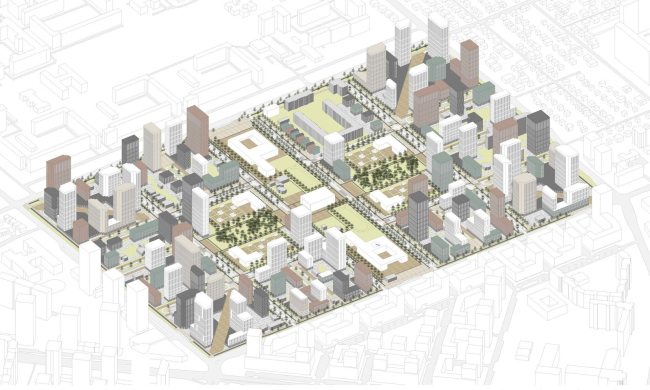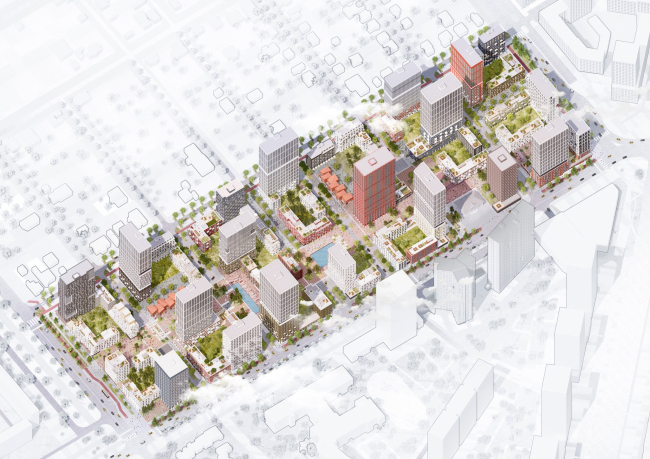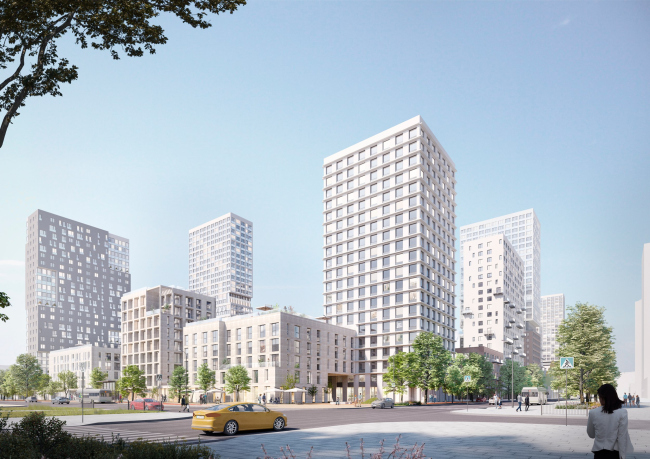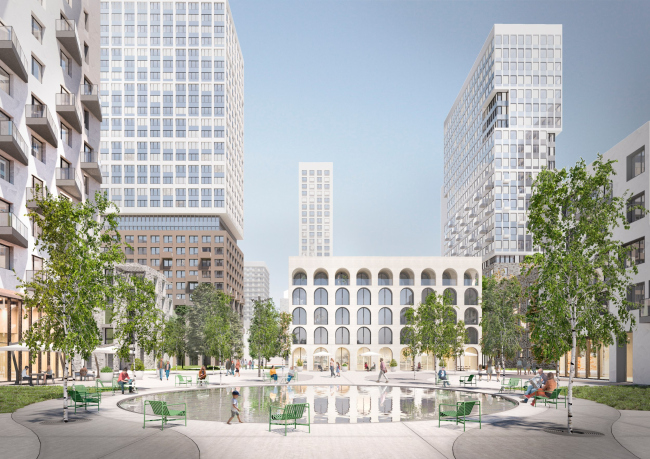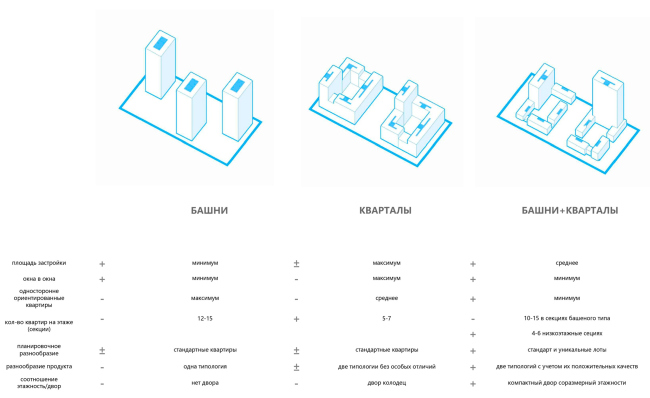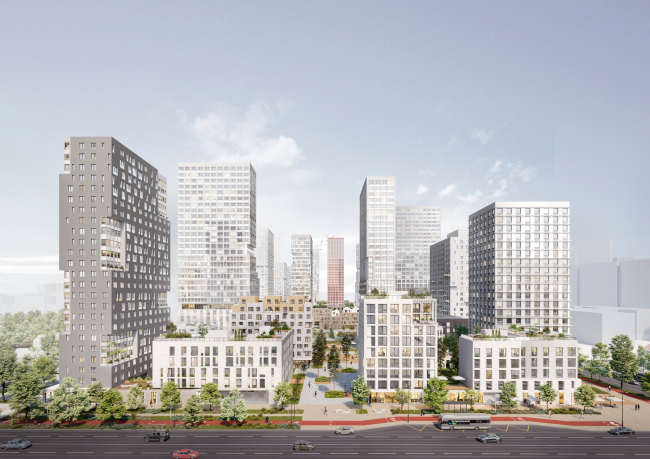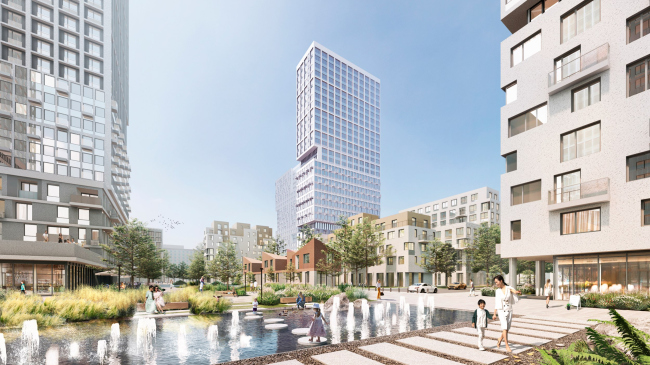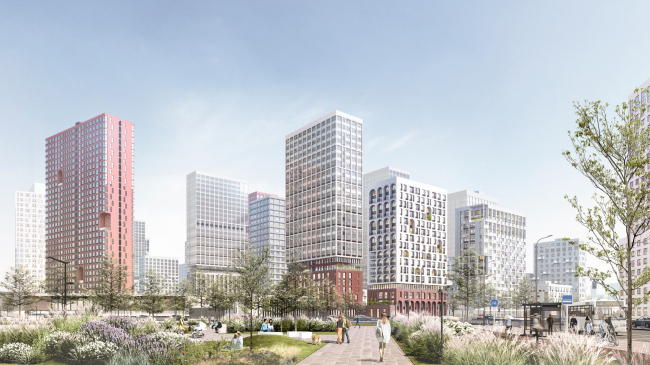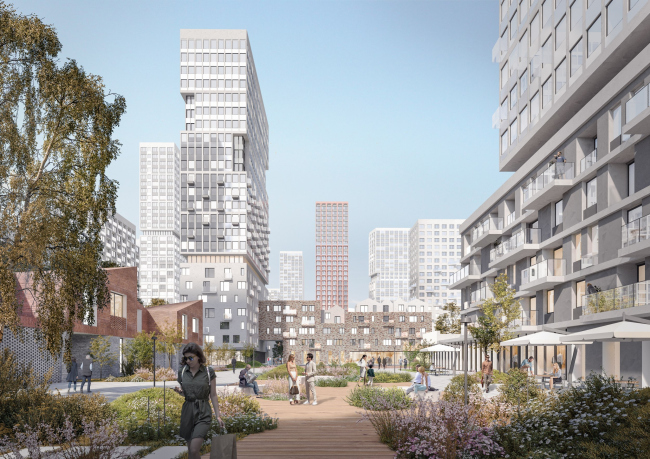|
Published on Archi.ru (https://archi.ru) |
|
| 02.10.2023 | |
|
A Tower and a Manor House |
|
|
Alyona Kuznetsova |
|
| Architect: | |
| Rostislav Zaiser | |
| Stanislav Belykh | |
| Tatiana Zulkharneeva | |
| Studio: | |
| OSAArchitects | |
|
The concept of a high-density residential district replacing a set of outdated privately owned houses in Yekaterinburg preserves the street grid and, in some cases, even the scale of construction. OSA Architects combine towers with townhouses and other types of housing, orienting the silhouette composition towards a pedestrian boulevard. Through non-linear routes and spatial diversity, the residents will see their neighborhood in a new way every day. The concept in question was prepared as part of a closed-door competition organized by the developer. The project will not be implemented, but the OSA architects considered it important to share with us about the work, which combines three principles important for their company: continuity, environmental diversity and integrated development. Microdistrict M73, from Amundsen Street to Chkalova StreetCopyright: © OSA architectsThe first thing the OCA does is it utilizes the framework of the existing streets. This is an efficient solution for two reasons: first of all, the transformation will be less painful for the citizens and the memory of the place will be preserved, and in addition, this scale and regularity of the streets will help to make the high-density environment more transparent, and thus accessible and lively. Residential quarter on Amundsen StreetCopyright: © OSA architectsResidential quarter on Amundsen StreetCopyright: © OSA architectsProceeding from the street framework, the architects create residential groups with sections of 5-9 floors as a base. There are 16 such groups in total, their concentration and density increasing towards the traffic junction. Sometimes the height is reduced to the level of the stylobate gallery, opening up views of the courtyards, towers, or the boulevard. At the same time, the architects separate everything that exceeds the index of mid-rise buildings plastique-wide and take these buildings into relative weightlessness and background transparency. Residential quarter on Amundsen StreetCopyright: © OSA architectsResidential quarter on Amundsen Street. ApartmentsCopyright: © OSA architectsThen, commensurate with the insolation norms, OSA arranges the towers with a height ranging from 16 to 30 floors in such a way as to form a silhouette composition from the dominants along the perimeter of the blocks and along the pedestrian boulevard. A prominent corner appears on the side of the intersection of Amundsen and Shaumyan Streets, where the architects must respond to a large traffic interchange. The other towers stand more loosely, either in meridional or latitudinal orientation. The almost-completed Sobytie complex next door, also designed by OSA, appears to fit into the general system of high-rise accents. Residential quarter on Amundsen StreetCopyright: © OSA architectsOne of the beliefs of the team working on the project is that the “urban estate” format should be preserved and developed. Therefore, the third level of the scale is “homeownership”. These areas include block townhouses and penthouses with terraces in the upper tiers of five-story houses. The authors also include two-story apartments, typologically similar to separate private residences, included, at one or another level, into the housing complex. Residential quarter on Amundsen StreetCopyright: © OSA architectsLongitudinally, the microdistrict is dissected by a pedestrian boulevard wrapping around the blocks. According to the project, public life is concentrated here: retail in the first floors, spacious squares with fountains and behind-the-scenes recreation corners, promenades and public gardens. To a pedestrian walking along the boulevard, the neighborhoods are revealed from new angles, bringing more impressions and variety to the daily routine. Private courtyards of residential groups are oriented to the boulevard, which have the obligatory playgrounds and sports fields, as well as two built-in kindergartens. Five streets crossing the neighborhood turn into dead-end passages leading to an underground parking lot. Cabs and delivery vehicles can also make a stop here. A section of Telman Street, located in the center of the neighborhood, also becomes a pedestrian axis. Residential quarter on Amundsen Street. Master planCopyright: © OSA architectsResidential quarter on Amundsen StreetCopyright: © OSA architectsBy creating a high-density environment, the architects simultaneously achieved its human scale and a variety of possible spatial impressions. From distant angles, the viewer can only see silhouettes of towers resembling tree trunks. But when one enters this “forest”, the whole ecosystem is revealed, consisting of multi-height houses and cottages, “slabs” and towers, which hide behind each other and then reappear, revealing previously unnoticed details. Residential quarter on Amundsen StreetCopyright: © OSA architectsResidential quarter on Amundsen StreetCopyright: © OSA architects |
|
